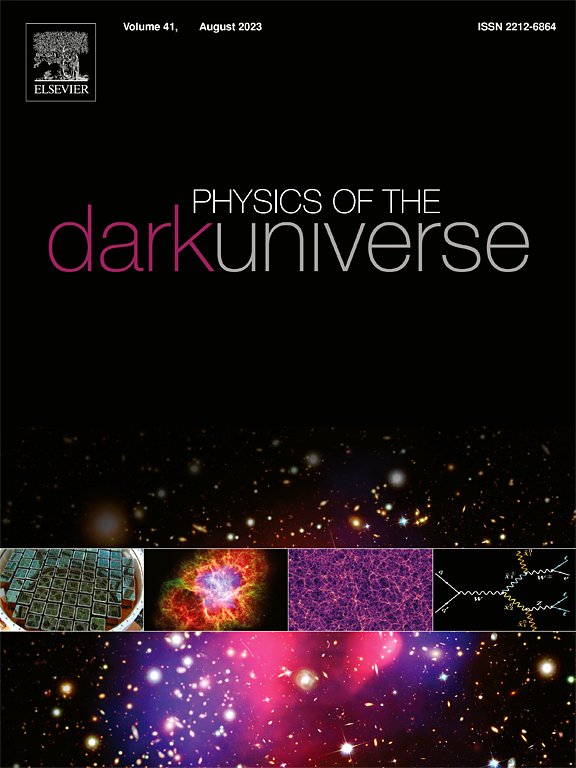非线性电动力学耦合的Cotton引力黑洞解
IF 6.4
2区 物理与天体物理
Q1 ASTRONOMY & ASTROPHYSICS
引用次数: 0
摘要
广义相对论(GR)的框架最近通过引入棉花引力(CG)得到了扩展,棉花引力是J. Harada提出的一个理论扩展。这种改进的方法将Cotton张量集成到引力场方程中,自然地包含了所有传统的GR解,同时允许宇宙学常数作为积分常数出现。在本研究中,我们深入研究了CG与非线性电动力学(NLED)耦合时的含义,构建并分析了三种不同的静态球对称构型。我们的研究集中在每个模型的视界结构、度量特征和潜在的NLED拉格朗日密度上。我们还通过比较这些解的计算阴影半径与事件视界望远镜(EHT)对Sgr A*的测量所施加的约束,将理论预测与观测数据进行了比较。结果揭示了一个广泛的时空几何光谱,从多视界结构到裸奇点。此外,预测阴影大小与EHT观测结果之间的一致性增强了这些模型在一定参数范围内描述Sgr A*天体物理图像的可行性。本文章由计算机程序翻译,如有差异,请以英文原文为准。
Black hole solutions in Cotton gravity coupled to nonlinear electrodynamics
The framework of General Relativity (GR) has recently been expanded through the introduction of Cotton Gravity (CG), a theoretical extension proposed by J. Harada. This modified approach integrates the Cotton tensor into the gravitational field equations, naturally encompassing all conventional GR solutions while allowing the cosmological constant to emerge as an integration constant. In this study, we delve into the implications of CG when coupled with nonlinear electrodynamics (NLED), constructing and analyzing three distinct static, spherically symmetric configurations. Our investigation centers on the horizon structure, metric characteristics, and the underlying NLED Lagrangian density of each model. We also confront the theoretical predictions with observational data by comparing the calculated shadow radii of these solutions to constraints imposed by the Event Horizon Telescope’s (EHT) measurements of Sgr A*. The results reveal an extensive spectrum of spacetime geometries, ranging from multi-horizon structures to naked singularities. Furthermore, the agreement between the predicted shadow sizes and EHT observations reinforces the viability of these models in describing the astrophysical image of Sgr A* within certain parameter bounds.
求助全文
通过发布文献求助,成功后即可免费获取论文全文。
去求助
来源期刊

Physics of the Dark Universe
ASTRONOMY & ASTROPHYSICS-
CiteScore
9.60
自引率
7.30%
发文量
118
审稿时长
61 days
期刊介绍:
Physics of the Dark Universe is an innovative online-only journal that offers rapid publication of peer-reviewed, original research articles considered of high scientific impact.
The journal is focused on the understanding of Dark Matter, Dark Energy, Early Universe, gravitational waves and neutrinos, covering all theoretical, experimental and phenomenological aspects.
 求助内容:
求助内容: 应助结果提醒方式:
应助结果提醒方式:


